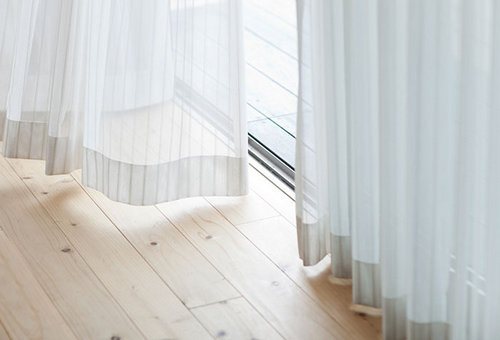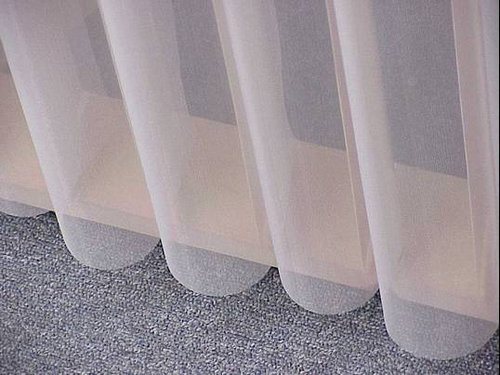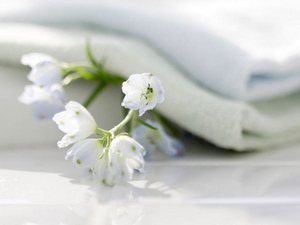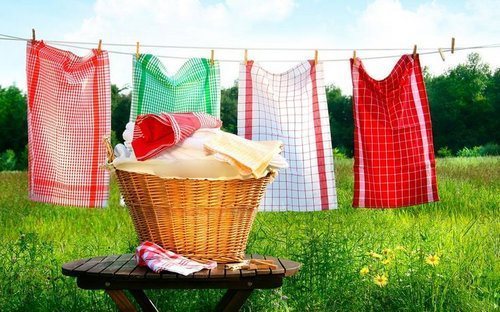Every housewife wants to see her home cozy and bright. Often, the curtains in any room are white tulle, which over time turns yellowish. How to get rid of the yellow tint of tulle and return it to its irresistible whiteness and radiance?

It turns out that there are two ways to bleach tulle: use dry cleaning or try bleaching it at home. The easiest option is to use dry cleaning services, but they do not provide any guarantee, and it costs a lot of money. You can try to bleach tulle at home using traditional proven methods or use ready-made bleaches that can be bought at any supermarket/store.
Safety Recommendations
In any of the options, you must follow basic rules in order to avoid unpleasant surprises:
- Be sure to put your hands in rubber gloves.
- Cover the working surface with polyethylene.
- Follow instructions and doses.
- You should not experiment with different methods of bleaching tulle.
- Use clean water, without chlorine.
Using bleach (whiteness)
In supermarkets and stores you can find bleaches (whiteness) of different manufacturers and pricing. It is important to remember one thing that bleach can only be used once; the second time the same bleach will not help get rid of the yellow tint of tulle. To bleach tulle using bleach, you need to follow the instructions written on the back of the bottle. In addition, it is worth remembering the following:
- Whiteness destroys the fabric structure; using it regularly, you can instantly pull out not snow-white tulle, but a holey rag.
- It is worth reading the instructions carefully and looking at the symbols indicated on the bottle jar, as not all tulle can be bleached with bleach.

Whitening tulle with bleach is easy and simple: just take a basin or other container with warm water. Add white to the water and immerse the tulle in the solution for an hour. It is very important that the tulle is completely submerged in water. After the specified time has elapsed, the tulle should be rinsed. After using white, a bleach smell may appear; fabric or fabric conditioner will help get rid of it.
Whiten tulle by soaking
This method does not require much effort and does not require apply whiteness or other chemicals. Before washing tulle in a washing machine or hand washing, you must do the following. Shake off dust from the tulle and soak in cold water. When the water turns gray, unscrew the tulle and change the water. You need to change the water until it is completely transparent. Only after soaking can you wash the tulle using washing powder.
In the washing machine
Bleaching in a washing machine is one of the simplest ways. To do this, you need regular washing powder and two drops of ammonia; if you don’t have it in the house, hydrogen peroxide 5-10 tablets will do. Mode Add washing powder with ammonia to the washing machine, select the washing mode delicate, without spinning, and not higher than 30 degrees. After washing, rinse the tulle in cold water, shake off excess water and dry as usual.There is only one thing worth noting - this method will not completely remove all stains on the tulle, but it will help remove the yellow tint.
With salt
Having removed the yellowed tulle from the window, do not rush to wash it. Thoroughly shake off the dust and soak the tulle in the solution for an hour. The final stage is rinsing.
Nylon tulle should be bleached in lukewarm water, but if the water is too hot, the tulle will immediately turn yellow. Then place the tulle in a salt solution. The solution is prepared with ten liters of water, eight tablespoons of salt and do not forget to add detergent. Dip the tulle into this solution and leave for 12 hours or overnight. Afterwards, rinse the tulle well and wash it using the usual method.

There is another option for bleaching tulle with salt. Shake off the dust, wash with washing powder, rinse and leave in saline solution for 15 minutes. The saline solution is prepared as follows: take five tablespoons of salt into a bucket of warm water. The saline solution will give synthetic tulle not only whiteness, but also make it a little stiff.
To bleach tulle made of nylon, organza or nylon, before washing it is worth soaking it in a different salt solution: for five liters of water you need two tablespoons of salt, which will allow you to draw out all the dirt from the tulle.
Using hydrogen peroxide
After washing (machine or hand), the entire tulle must be dipped into a solution of hydrogen peroxide. The solution is prepared from a spoonful of ammonia, two spoons of peroxide and ten liters of water. The tulle must be completely immersed in the solution. If this is not done, yellow stains will appear in some places. After half an hour, the tulle can be taken out and rinsed in cold water, and dried in the standard way.
With the help of greenery
As strange as it may sound, with the help of greenery, knowledgeable housewives add emerald and white colors to their tulles. A solution of brilliant green is prepared as follows: dissolve 15 drops of brilliant green in a glass of water. Mix thoroughly and leave for fifteen minutes. If during this time no sediment appears at the bottom of the glass, then everything has been done correctly and you can start bleaching. But if sediment appears at the bottom of the glass, you should redo the solution.
Pour the solution into a container for rinsing tulle after washing. Place the tulle in the solution, spreading it evenly over the container. Then we take the tulle out of the solution, shake off excess water and dry it.
Bleaching tulle with potassium permanganate
Back in the old days, our grandmothers did not have the opportunity to purchase whiteness, so they used what they had at hand. And everyone had potassium permanganate, with the help of which they bleached the tulle. In our time, this method has also been preserved. For a solution per 15 liters of water, you need half a glass of soluble potassium permanganate. Mix everything well. Before dipping the tulle into a solution of potassium permanganate, it must be rubbed with ordinary soap. Then we lower it into a bucket or container with potassium permanganate for 30 minutes. Then take it out, wash, rinse and dry.

With the help of blue
The blue must be dissolved in a glass of water (as in the method with brilliant green), if washed by hand. If you wash by machine, you need to add one cap to the washing powder.
Starch
Another way to bleach tulle is to bleach with starch. Washed tulle should be dipped in a starch solution. Then rinse and dry.Under the influence of starch, dust will settle not on the tulle fibers themselves, but on the starch. And after the next wash, the dirt will be washed away along with the starch. In addition, starch will allow the tulle to keep its shape.
Prevention of yellowness
In order not to rack your brains about how to make tulle clean and emerald, you should simply not bring it to this state. For prevention, you should wash tulle once a season either by hand or in a machine. You need to wash with washing powder with a special detergent for thin fabrics, at a low temperature (no more than 30 degrees), wash type – delicate cycle. It is important to remember that hot water causes the tulle to turn yellow.










Let’s just say “the experiment was a failure,” but I’m happy with the result! I decided to try the option with brilliant green, since I’ve seen it very often on the net, and it’s good that it didn’t happen right away on a 7-meter tulle! I had a beloved white cotton blouse, but as often happens, after giving birth, it stopped fitting. It hung in the closet for three years, then I decided to try it on - it fits, but it turned yellow. I've been meaning to bleach it with something for a long time, and today I came across the green option again. I think I'll take a risk! I prepared everything, did everything as written, and this is what happened... The blouse acquired an incredibly chic mint color, which made me very happy!!! It didn’t work out to bleach, but the thing still got a new life.I am pleased!!!!!